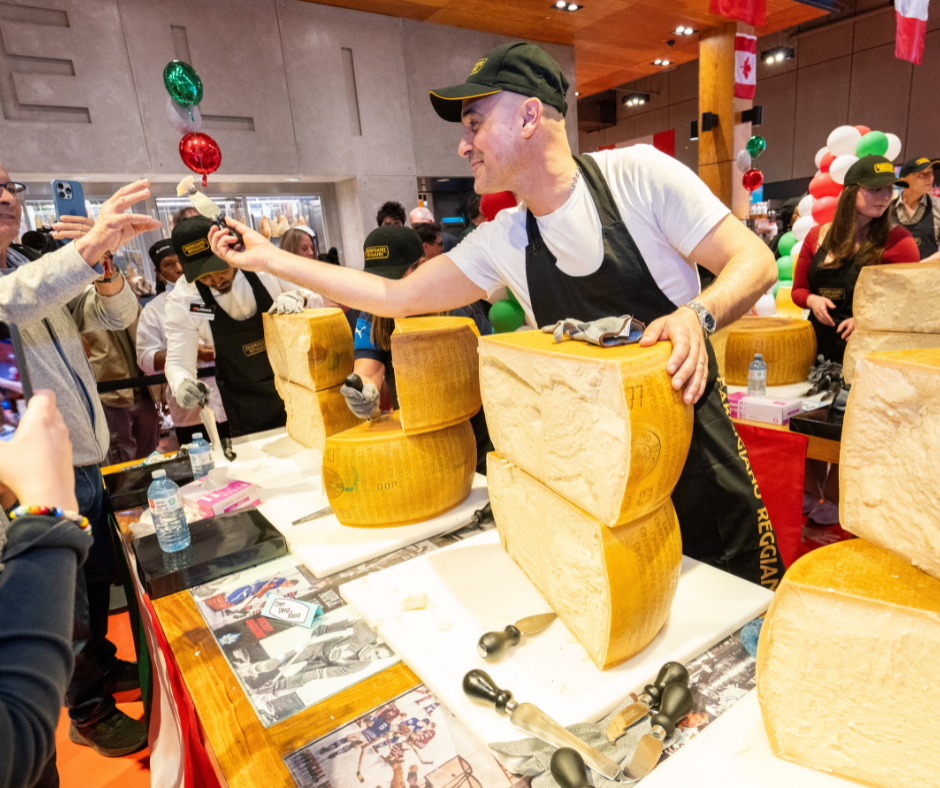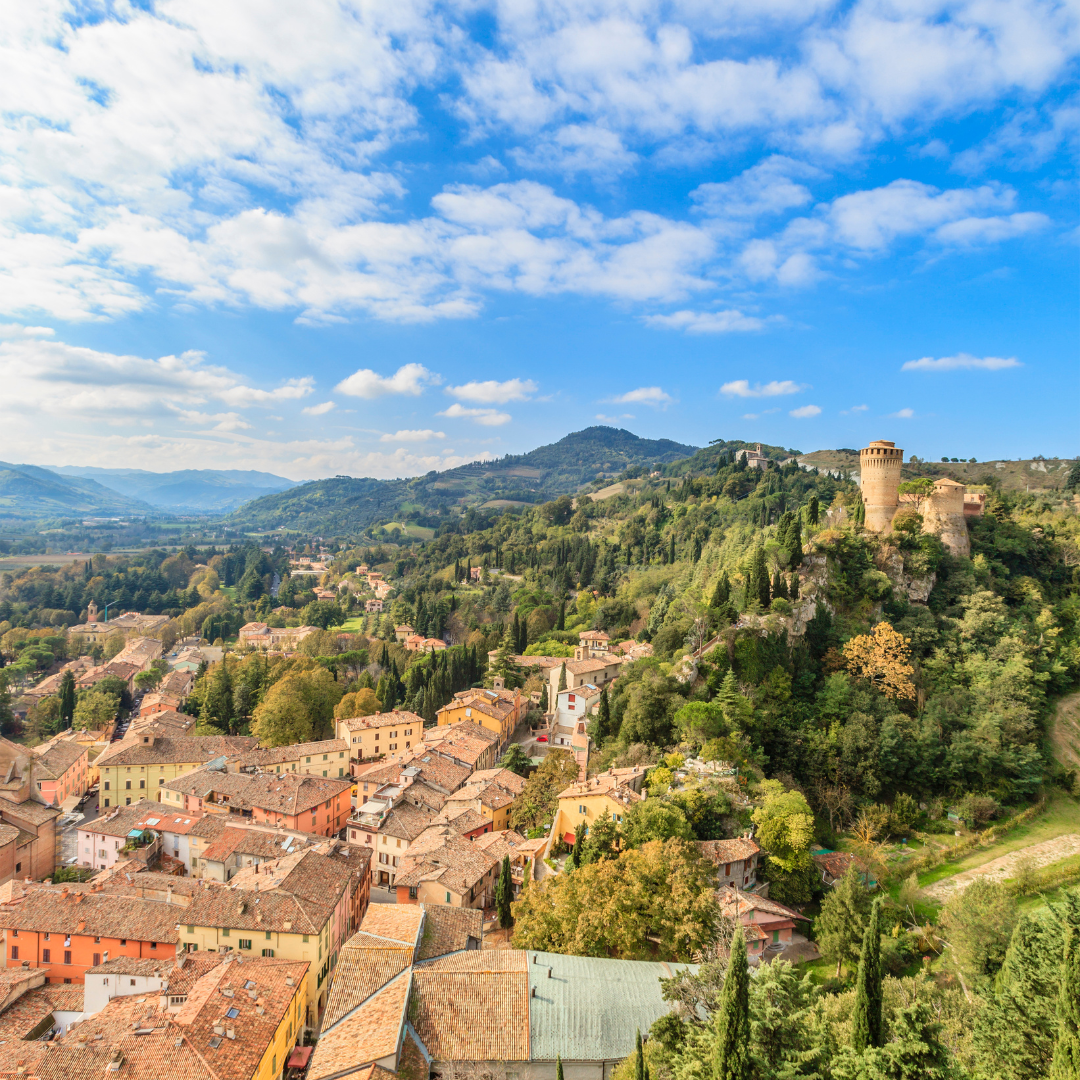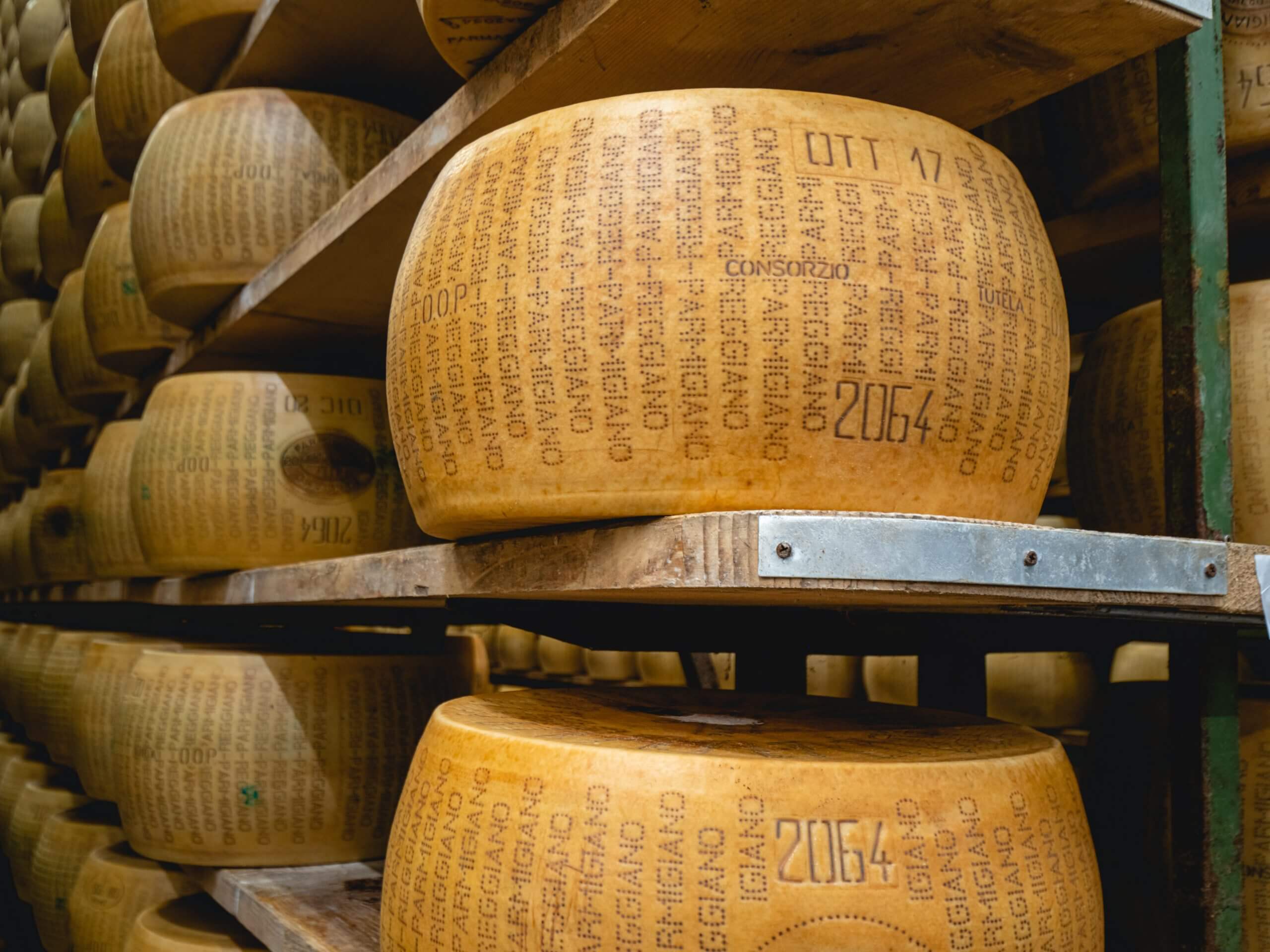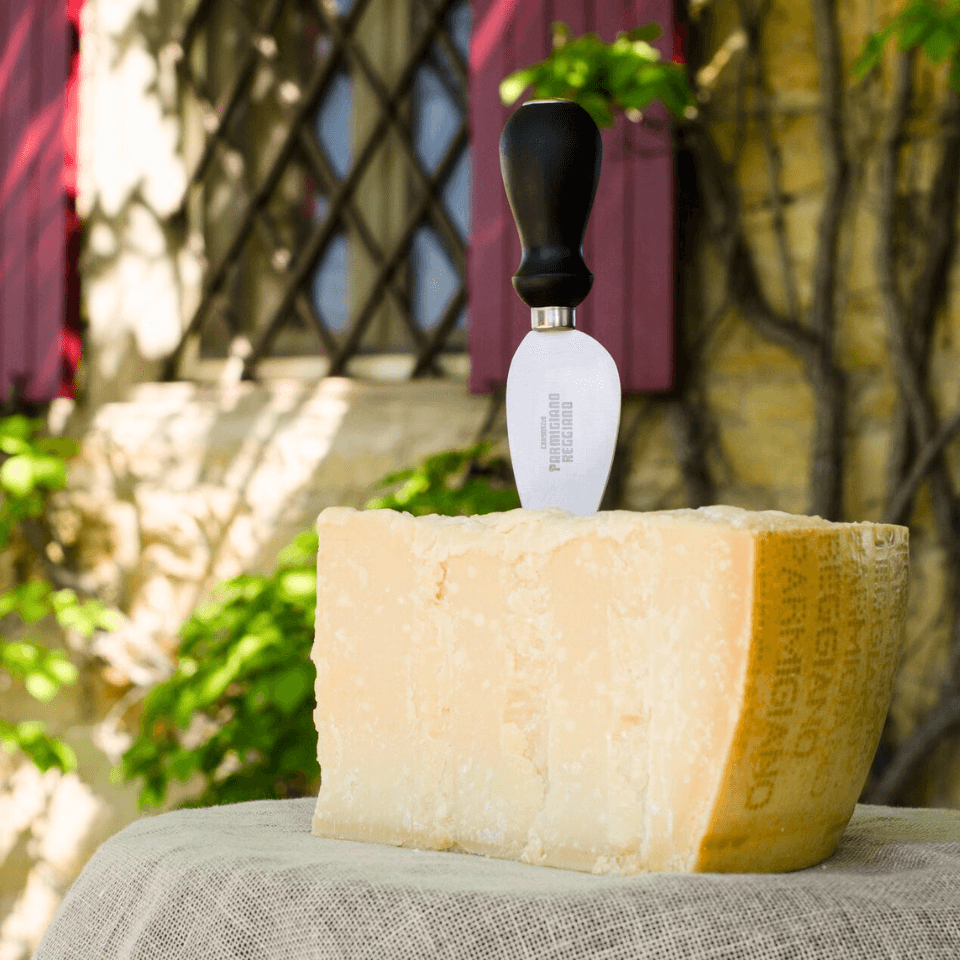The Italian art of Parmigiano Reggiano cheesemaking has existed for centuries. But did you know that this remarkable cheese is also in the Guinness Book of World Records? On June 14, 2025, Parmigiano Reggiano and Loblaw Companies Ltd. set a new Guinness World Records title for the Most parmesan cheese wheels cracked simultaneously (multiple venues).
By cracking open 1,672 wheels of Parmigiano Reggiano (each weighing approximately 40 kg) simultaneously across 452 Loblaw stores coast to coast, they were able to officially break the world record – a record that they previously set it in 2014 by cracking 1,209 wheels.

The partnership between Parmigiano Reggiano and Loblaw is an example of what it takes to reinforce the worldwide importance of this phenomenal cheese. “This achievement is more than just a number – it’s a celebration of tradition, passion and the global love for Parmigiano Reggiano,” said Nicola Bertinelli, President of the Consortium of Parmigiano Reggiano.
“At Loblaw, we’re always looking for meaningful ways to celebrate food and culture with our customers,” says Joe Difalco, Vice President of Fresh Merchandising at Loblaw Companies Ltd., adding: “Breaking this record alongside Parmigiano Reggiano was not just a milestone but an unforgettable experience that brought communities together across Canada.”
What makes Parmigiano Reggiano so special?
It’s not just about breaking world records, of course. When we were invited to visit Parma, Italy – where the Parmigiano Reggiano Cheese Consortium is headquartered and the world-famous cheese must be made – we were immediately intrigued. The Consortium oversees the Parmigiano Reggiano industry and tightly monitors the product, so to be hosted by them was an honour we couldn’t pass up.

Off we went to Northern Italy – the Emilia-Romagna region, to be specific. Parmigiano Reggiano, like Prosciutto di Parma, is what’s called a Protected Designation of Origin (PDO) product. To be labelled as authentic Parmigiano Reggiano, the cheese must be produced within a designated geographical area using approved methods and ingredients. As of February 2023, there are around 300 dairies where authentic Parmigiano Reggiano is made under the careful watch of the Consortium.
How can you tell if the Parmigiano Reggiano you’re buying is authentic?
The mark of authenticity is the Consortium’s seal, stamped into the cheese rinds as they are molded and then hot-iron branded upon approval by official inspectors. Of course, most home cooks don’t buy their cheese by the wheel, so the packaging must indicate its origins as well. In North American grocery stores, you’ll know you’re buying authentic Parmigiano Reggiano if the package bears the red-and-yellow PDO seal and the Consortium’s black-and-gold seal. For more information about the PDO seal and the importance of certification, check out our story on European products.
People often ask: “Is Parmesan cheese the same thing as Parmigiano Reggiano?”
The simple answer is no. Parmesan cheese is an unregulated cheese that can be produced anywhere. An easy analogy to understand is that Parmigiano Reggiano is the Champagne and parmesan is the sparkling wine.

How Parmigiano Reggiano is made
- It starts with the cows, who must be fed with locally-grown fodder – this is how the unique terroir of the region is imparted into the product. Over 1000 litres of milk is produced between an evening and morning milking, then combined with a whey starter and rennet, which comes from cows’ stomachs and works with the whey to coagulate the mixture.
- The curd that forms is broken down into small granules with a traditional tool known as a spino – think huge, two-handed whisk. The cheesemaker will begin to add heat until the granules sink down to the bottom of the vat and form a mass weighing over 200 pounds. With the help of an assistant, the cheesemaker lifts out the mass and cuts it into two halves, known as ‘twins.’
- The twins are wrapped in linen cloth and placed in a wraparound mold called a fascera. This is when the first stamp is added – the dotted “Parmigiano Reggiano” insignia, a registration number and production date is on a stencil on the inside of the fascera band, and the inscription continues to be pressed into the rind throughout the rest of the cheesemaking process.
- After a few days, the wheels are immersed in a salt solution, which enriches the flavour of the cheese and hardens the rind. Then the waiting begins: Authentic Parmigiano Reggiano is aged for a minimum of 12 months, upon which point the Consortium’s cheese regulators will conduct an auditory inspection by tapping the exterior of each wheel with a hammer to listen closely for irregularities. Wheels that don’t pass the inspection are stripped of their markings and either sold under a different name or shredded. The wheels that are approved get branded with the Consortium’s seal. If required, Parmigiano Reggiano can be aged further, up to 40 months. The longer the cheese ages, the more granular the texture and sharper the taste.
How long can you store Parmigiano Reggiano?
Authentic Parmigiano Reggiano can be pricey, so we asked the experts at the Consortium experts how to keep it fresh as long as possible.
- When you buy a piece of Parmigiano Reggiano freshly cut or when you take it out of the vacuum-pack, it must be stored in the refrigerator at a temperature ranging from 4 to 8°C.
- Parmigiano Reggiano has to stay at an optimal humidity level far from other food (the fatty part of cheese tends to absorb other smells present in the refrigerator), so keep it in a glass or plastic container.
- It is advisable never to freeze cheese.


















